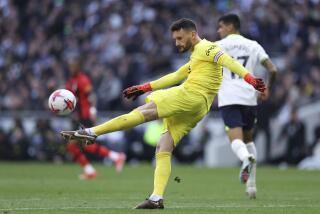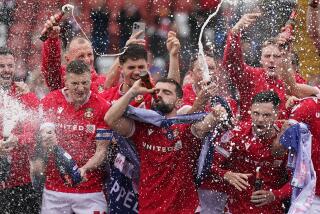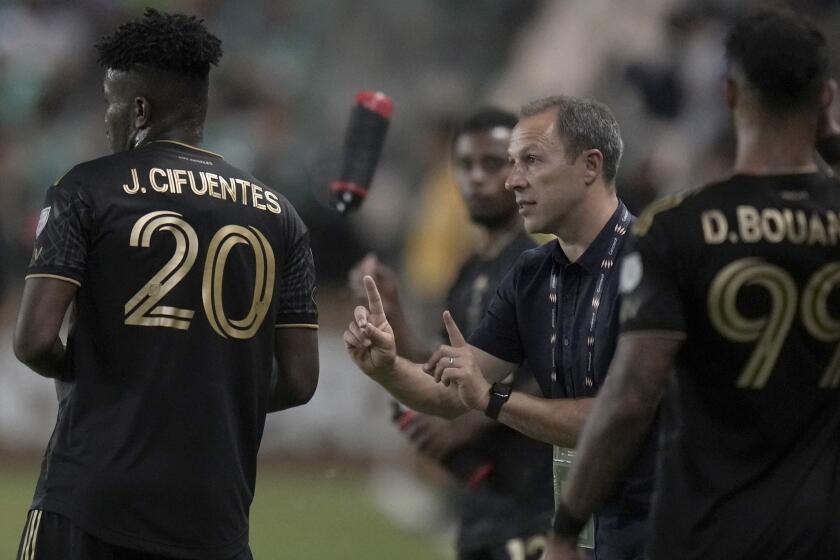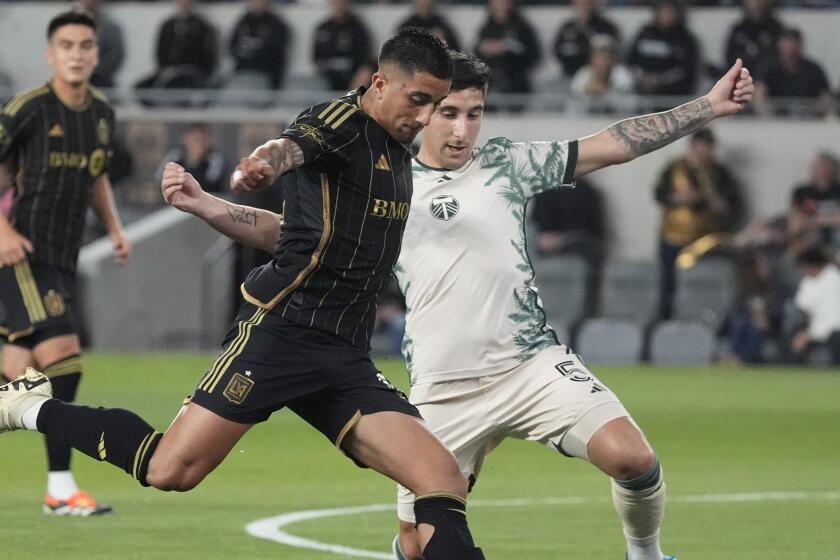1990 MISL ALL-STAR GAME : 10 Years of Game’s Shining Stars
Professional Sports for 500, please.
The answer is: It was first contested between the Atlantic and Central Divisions and last time pitted Dallas against the rest of the league .
Any three Jeopardy contestants, yes, any three, would draw a blank with that one, but the correct answer, in the form of a question, is “What is the Major Indoor Soccer League All-Star game?”
What is it? Well, let’s see:
1979-80
In its second year of existence, the MISL went from a six-team, one-division format to a 10-team, two-division setup and celebrated with its first-ever All-Star game. The Central outscored the Atlantic, 9-4, a surprise considering seven of the league’s top 10 scorers played for the Atlantic Division. Oh, the Central’s goalie, Houston’s Mick Poole, who faced 41 shots and made 26 saves in the game, finished seventh in goals-against average that year at 5.29.
Note--Branko Segota, then an 18-year-old, two-year “veteran” with the New York Arrows, played in his first MISL All-Star game. He assisted on a Fred Grgurev goal.
Attendance--16,892 at the Checkerdome in St. Louis.
1980-81
The league once again expanded, this time to 12 teams and three divisions (the Western was added). Players from two Central teams (Chicago Horizon and St. Louis Steamers) played for the Western squad while players from the Cleveland Force and Buffalo Stallions were adopted by the Atlantic, creating the Eastern team. The West prevailed, 8-5.
Note--Adrian Brooks, a rookie midfielder with Denver, scored two goals for the West and was named Most Valuable Player. Brooks stayed in the league only three more seasons and was never among the league’s top 20 scorers, the only All-Star game MVP with such a distinction.
Attendance--13,170 at Madison Square Garden in New York.
1981-82
Now with 14 teams, the league realigned into the Eastern and Western divisions, seven teams in each, and for the first time had a true East-West clash in the All-Star game. The West won again, 9-5, behind Tony Glavin’s five goals and two-assists.
Note--Slobo Ilijevski made his first All-Star game appearance. The St. Louis Steamers goalie, playing for the West, faced 31 shots in the first half and allowed only one goal, making six saves.
Attendance--13,426 at the Memorial Auditorium in Buffalo.
1982-83
Still with two divisions of seven teams, but with three teams from the rival outdoor North American Soccer League (including the Sockers) replacing three that folded, the league showcased its top talent in another East-West showdown. The West toppled the East, 6-5, in overtime. Kim Roentved of Wichita kicked in the game-winner.
Note--Although the West won the game, an Eastern player, Memphis’ Stan Stamenkovic, took home the Most Valuable Player trophy for scoring four goals.
Attendance--14,289 at Kemper Arena in Kansas City.
1983-84
For the first time the MISL lost teams, but only because the three NASL teams were forced back into that league. Now with six teams in each division, the East got its first victory, 8-6.
Note--Stamenkovic, who had moved over to the Baltimore Blast, followed up his four-goal performance in the previous year’s All-Star game, with a four-assist showing one and again was voted MVP.
Attendance--16,312 at The Arena in St. Louis.
1984-85
Back to 14 teams with the addition of four NASL clubs. The All-Star game featured 10 players from what was considered a talent-laden NASL, yet it was Stamenkovic who stole the show, and his third MVP award, with three goals and two assists. Again, Stamenkovic received the honor in a losing effort, the West won, 11-7.
Note--Instead of giving the MVP to a player on the losing side, the award could have gone to one of three Sockers on the winning squad: Steve Zungul (three goals, one assist), Branko Segota (one goal, three assists) or goalie Zoltan Toth (who faced 21 shots and made 11 saves).
Attendance--17,863 at the Richfield Coliseum.
1985-86
Not only did the league shrink again (to 12 teams), but so too did goal production in the All-Star game. The final was 5-3, West.
Note--Only 59 shots were taken in the game, by far the lowest total up to that time. It was the first time less than 65 shots had been fired. There had been at least 74 taken on four previous occasions and at least 90 in two of those games.
Attendance--12,456 at the Chicago Stadium.
1986-87
The Eastern team won for only the second time, 6-5, in another overtime. Baltimore’s Mike Stankovic scored the only sixth-attacker goal in All-Star history with 20 seconds remaining in regulation to force the extra period, and Kai Haaskivi, who earlier had an assist, got the game-winner just 32 seconds into overtime.
Note--This time the MVP voting was done after the tie was unknotted and was given to the guy who did the untangling--Haaskivi of Cleveland.
Attendance--15,893 in The Forum in Inglewood.
1987-88
In the last game between East and West, the West won for the sixth time (in eight games), 9-3. Preki of Tacoma, with three goals, was the MVP.
Note--Steve Zungul set a record by playing in his eighth All-Star game (it likely would have been his ninth were he not with San Diego in the NASL in 1983-84). He scored a goal and assisted on two others.
Attendance--17,251 at The Tacoma Dome.
1988-89
Down to seven teams after four franchises folded during a tumultuous off-season, the All-Star game mismatched the host Dallas Sidekicks against the best of the rest. No need to print who won; the final was 8-1. With a two-goal performance, Preki was the MVP for the second consecutive year.
Note--In last year’s contest, both teams combined for only 47 shots (there were a total of 91 taken in that first year).
Attendance--10,435 at Reunion Arena in Dallas.





